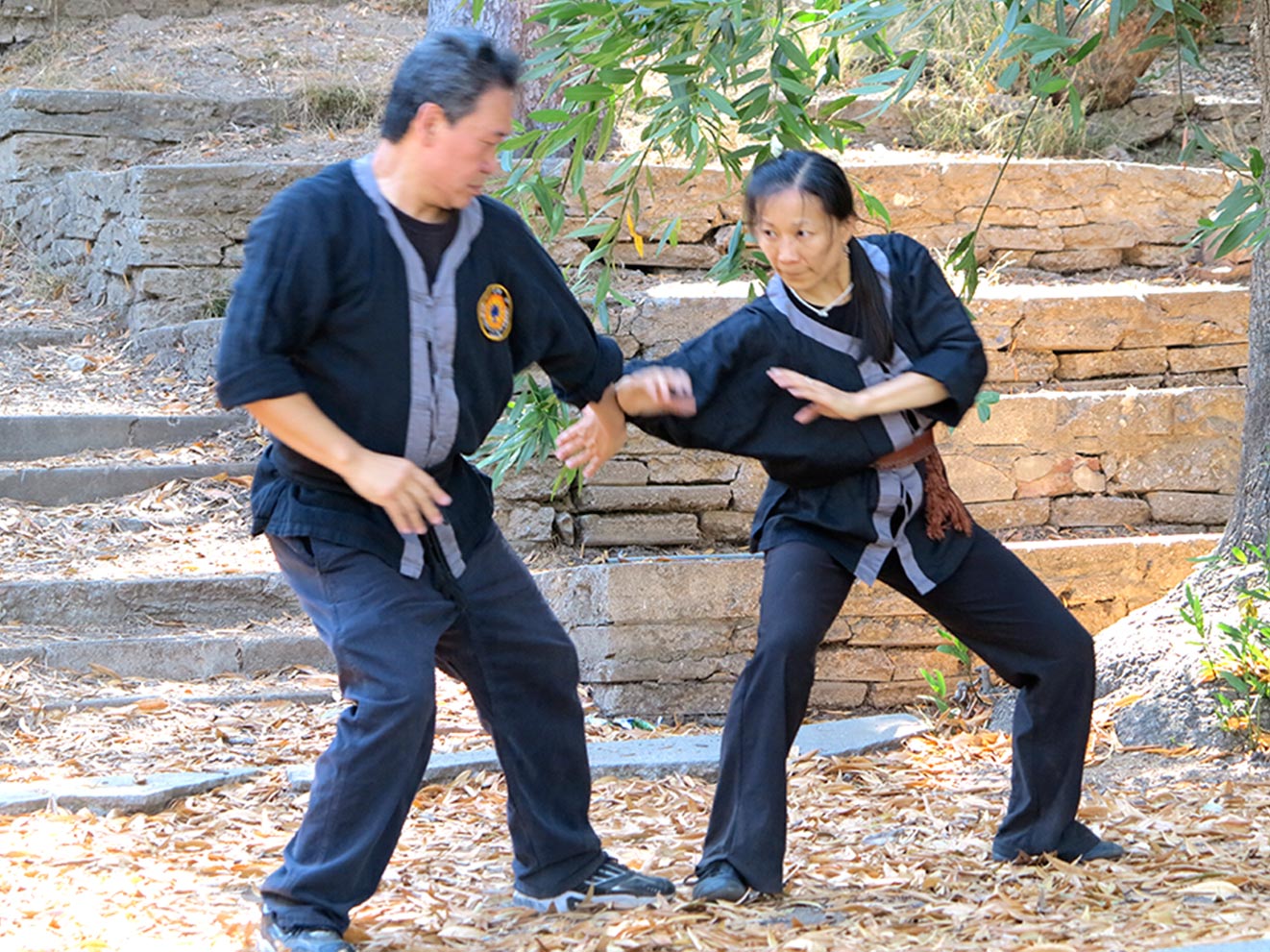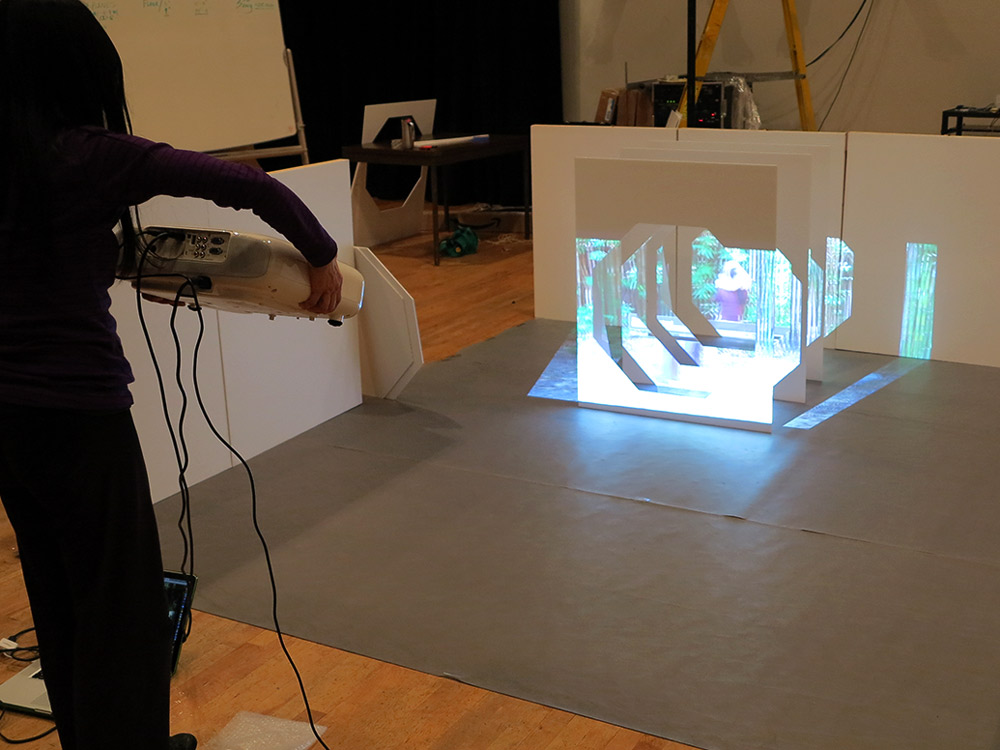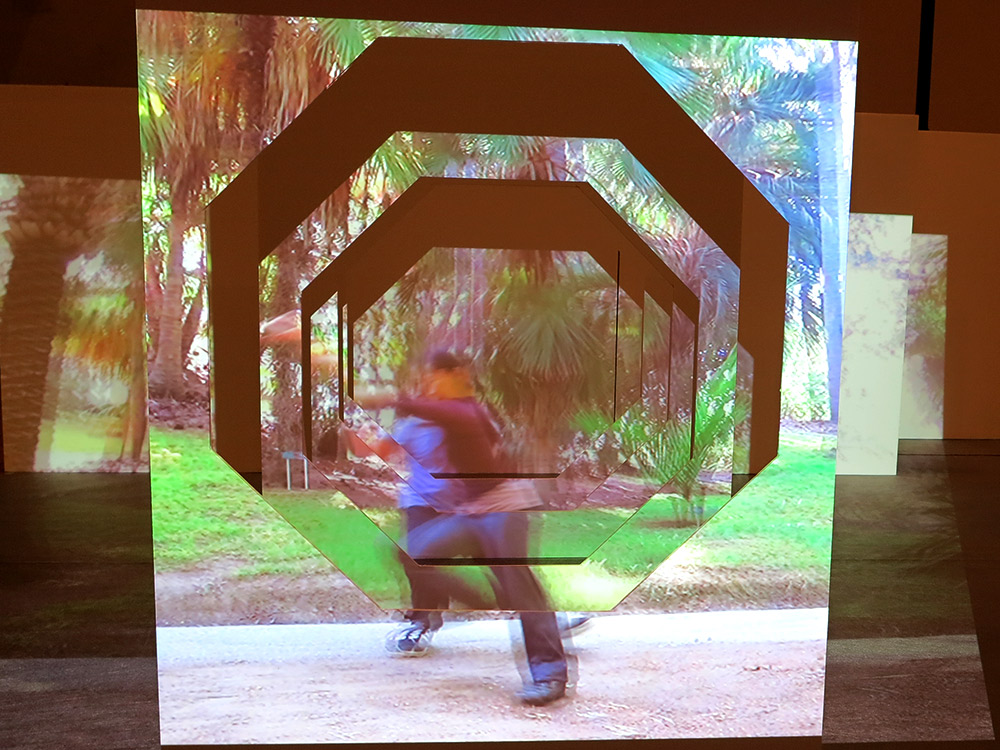Performance as Research (PaR) illuminates movement based dance making as a regenerative creative process. It gives value to the state of being in action, where by in dancing the primary text is being written, and re-written in liveness. PaR suggests a recycling investigation, in which non-linearity is considered, as the flow from movement jam, to rehearsal, to performance can be reordered with the potential of multiple research methods, offering the exciting contingencies of process.
PaR, characterized by Baz Kershaw as ‘transdisciplinary innovation in action’ (Kershaw and Nicholson 2011) also underlines the potential of interdisciplinary exploration informing the dance making process. With this in mind the collaborators in Leaning On A Horse Asking For Directions study the approaches to re-vision Cheng-Chieh Yu’s three part choreographic inquiry as a combined media environment. What are the constructive ramifications of this interdisciplinary exchange on liveness, and kinesthetic empathy?
Deconstructing the primacy of the unitary screen or the sense of an originary plane of action re-situates the viewer in relation to a stereoscopic 3D (S3D) landscape. Using an iterative process whereby the choreographic content informs and is informed by the spatial interplay with S3D projected images explores the qualities of visual perception and spectatorship. Foregrounding the kinesthetic-empathetic position of the viewer is the basis for positing the effects that stereoscopic media may have on notions of spectatorship.
The potential of S3D filming techniques, methods and projections to amplify perspectives on, and identification with the moving body in relation to screen planes?
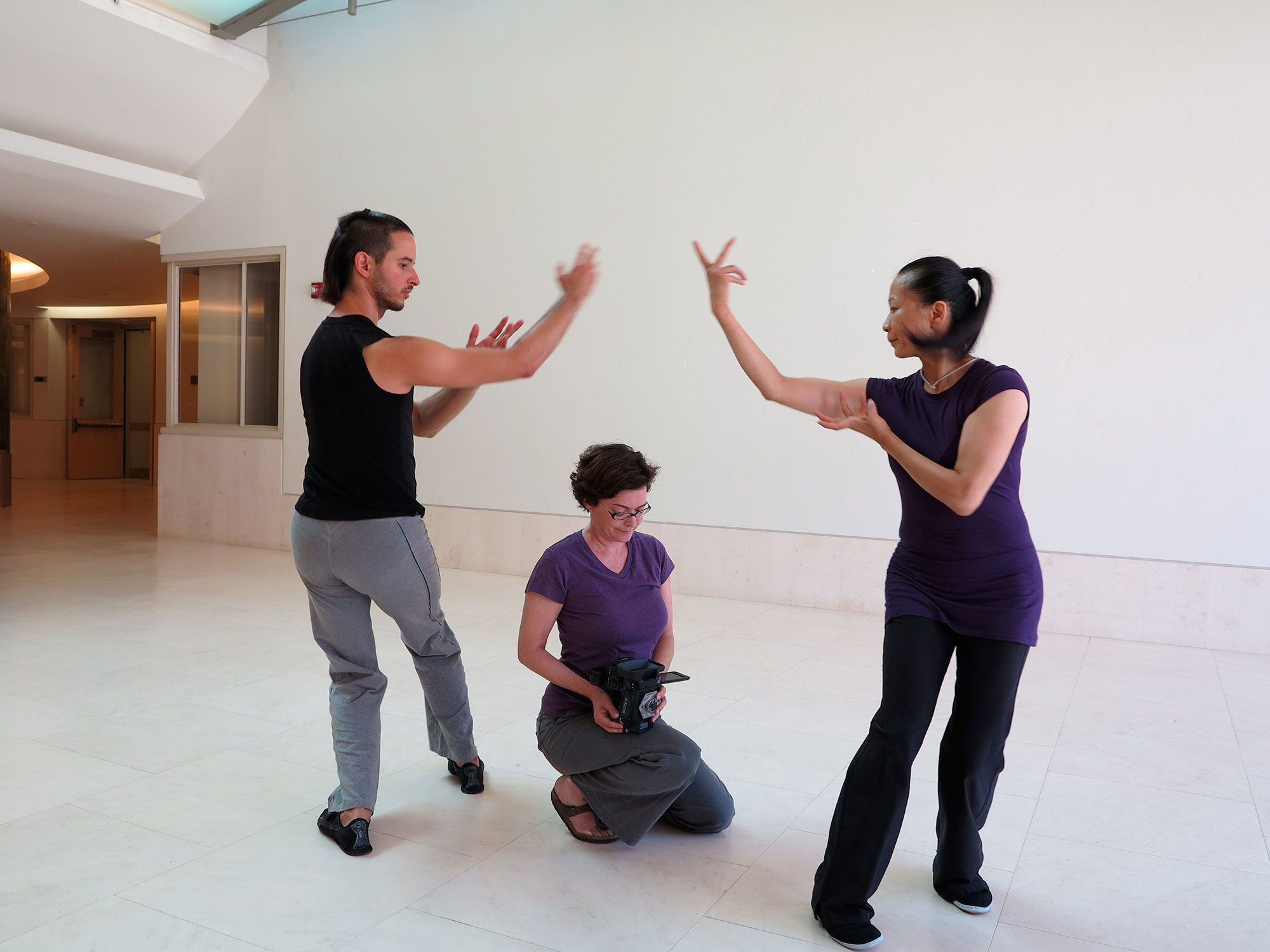
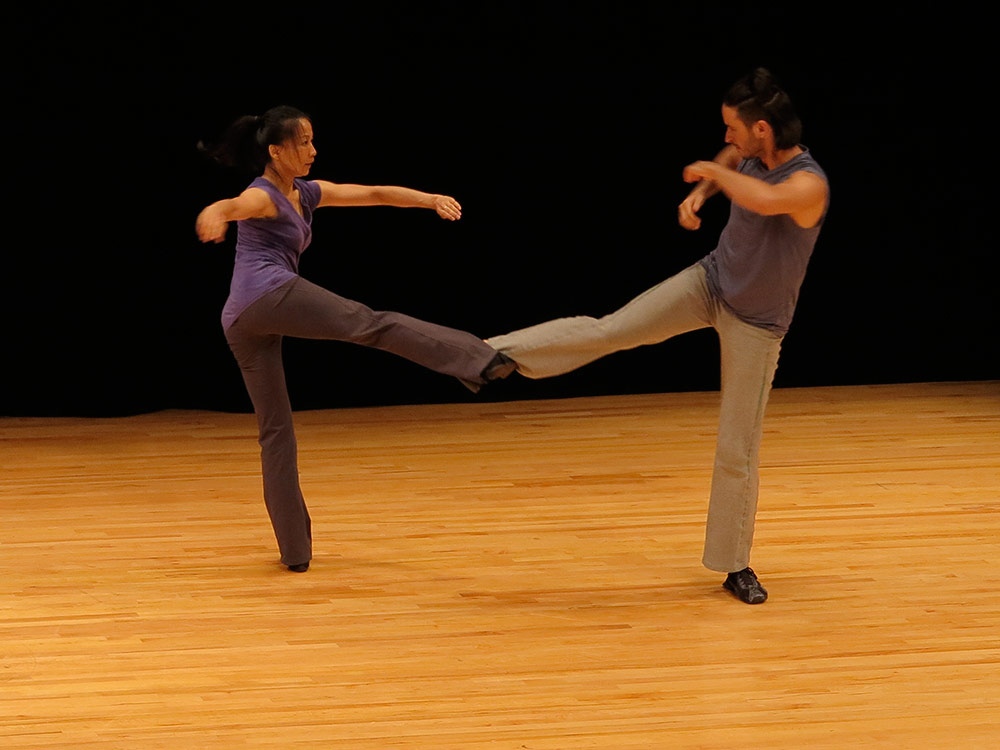
In what ways do installations incorporating S3D video mediate embodiment, communicate impulse, intention, feeling, and potentially elicit an enhanced empathetic response?
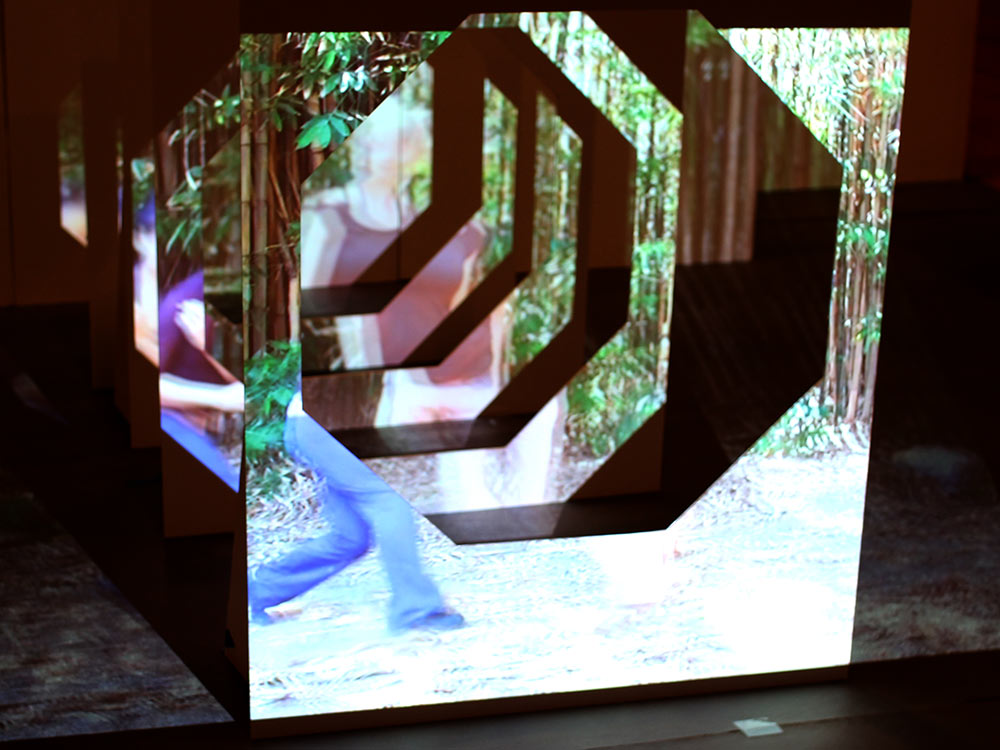
How do manipulations of stereoscopic media re-render cultural specificity, for example, popular culture’s understandings and cinematic representations of “Chinese martial arts”?
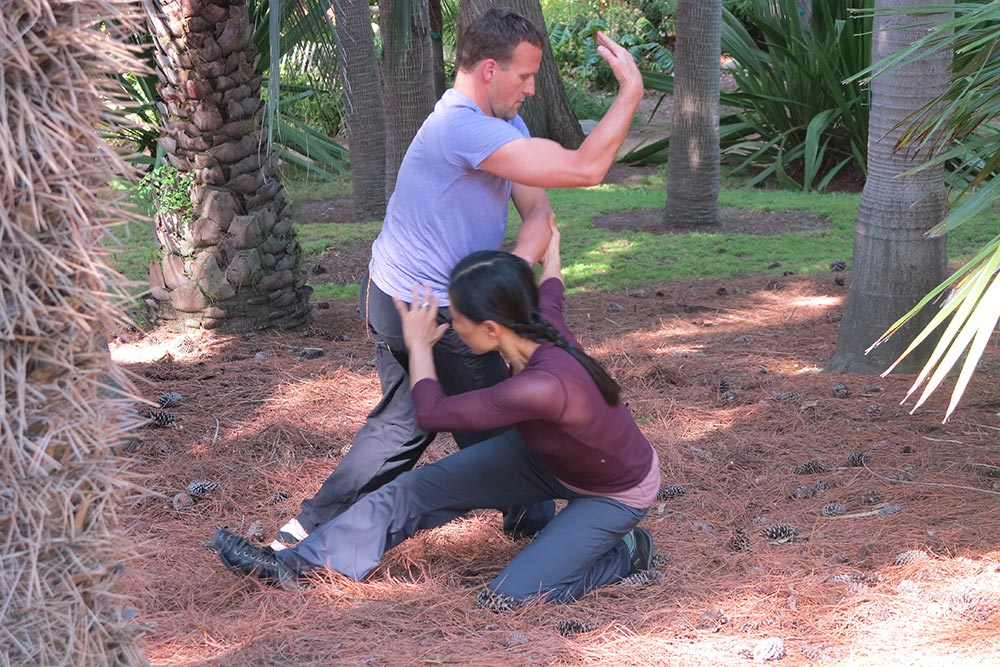
Perception and stereoscopy
How an intuitive camera-to-performer interaction will shape the relationship between the camera/practitioner/spectator experiences?
To what degree can we manipulate the IO (inter-ocular distance between the camera lens) and convergence in S3D to result in greater image control and camera finesse in production?
Using prosumer stereoscopic cameras, we filmed the movement using fixed frame and hand-held techniques. The equipment allowed ease of movement in and around subjects. These tests confirmed the “rewriting” capabilities of S3D technology in relation to moving bodies, challenging accepted ideas and methods such as the limited use of close-up images, camera movement and a 360-degree perspective in conventional S3D practice.
(link to a technical page – or Francis Hanneman’s blog page )
We consulted with psychologist Bruce Bridgeman, a research leader in the area of spatial aspects of vision and perception/action coordination (“two visual brains in action”). Together, we explored the cognitive implications of the S3D experience, informing our further research into the adaptation and use of depth information sources in viewing S3D imagery to increase the engagement and quality of the stereoscopic experience.
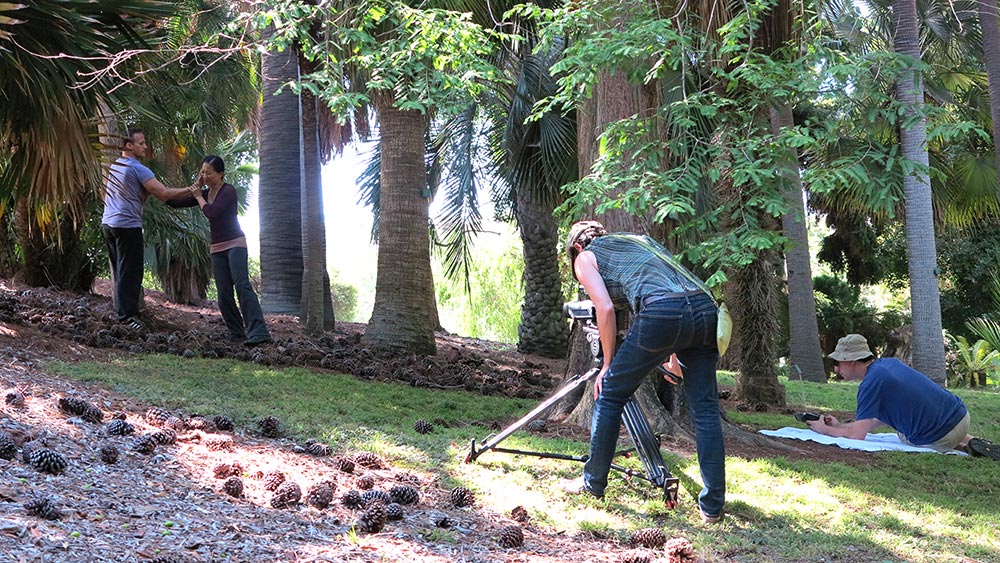
Marlene will do a frame grab 1 anaglyph, one side-by-side
Scholar Raissa Desmet Trumball raised questions of intercultural representation in relation to the mediation/translation inherent in the proposed work. She asserted the potential maintenance of a S3D fourth wall that could put a transparent limit on the viewer’s access to the voluminous bodies, situating the viewer in an aquarium environmental relationship.
The focus was on contemporary dance being in dialogue with the martial art of BaGuaZhang (BGZ), through a mutual emphasis on body volume, circular pathways, and sustained focus. In the future, we would like to be able to reflect on how Asian diasporic issues – such as how cultural transmission translates form – and speak to cultural difference and desire through comparative movement techniques.
